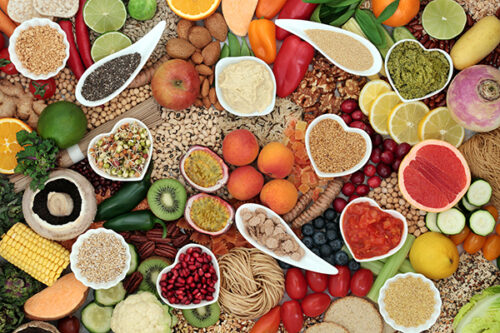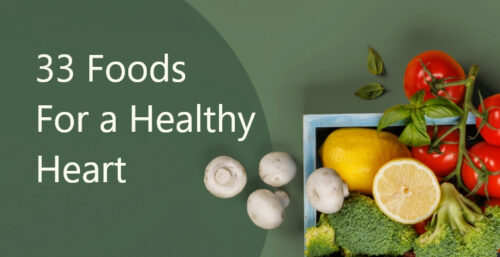Sugar: Adding Pleasure to the Satisfaction of Starches
Updated June 1, 2010

John McDougall, MD
In order to increase the probability that you will follow a starch-based diet, I encourage you to add reasonable amounts of simple sugars to some of your dishes. This is a small price to pay for a real opportunity to stick with the proper human diet and regain lost health and appearance caused by a lifetime of eating an animal- and junk-food based diet. Nothing adds to the enjoyment of a food more than a little sweetness, which is naturally found in association with energy; and obtaining energy is a basic necessity for life and the primary reason for eating.
Sugar (glucose) is the ubiquitous fuel in biology and the human body’s primary source of cellular energy. Sugar is especially healthy for you when delivered in its natural packaging, more specifically in starches, vegetables, and fruits. However, popular thinking is that all sugar is bad, and that veil of aspersion is cast over all sugar-containing foods, including much maligned rice and potatoes. This unjustifiable fear of sugar is a major reason for the present day exponential expansion of the worldwide epidemics of obesity, type-2 diabetes, heart disease, arthritis, intestinal disorders, and cancers. (Instead of sugar-phobia, people should be having fat-, oil- and animal food-phobias.) Your health will skyrocket with my recommendation to add sensible amounts of simple sugars to your energy-supplying, appetite-satisfying, starch-based meals.
Sugar is fat-free, cholesterol-free, and sodium-free, and contains very low levels of chemical residues. It is inexpensive, costing about 40 cents a pound, which translates into 45 calories per penny. No animals are harmed in the production of sugar and its environmental impact is extremely small, especially when compared to livestock production. According to the Sugar Association, “Pure and simple, sugar is as perfect as it gets.”
The Six Tastes of the Human Palate
The taste buds that dominate the tip of the tongue are for carbohydrates (sweet) and salt, which causes people to be seekers of these essential nutrients. Bitter and sour sensitivities are most commonly perceived as unpleasant, sharp, or disagreeable. They are located toward the back of the tongue and serve to identify poisonous items to be avoided.
A fifth taste for the amino acid monosodium glutamate (MSG) was identified in 1908 from isolates of seaweed. This taste was called “umami.” When tasted alone, MSG is unpalatable, but when mixed with other foods, it becomes a flavor enhancer. Although it was originally thought that umami was for the identification of protein in foods, research has not supported this theory. Seaweed and tomatoes, which are not rich sources of protein, also have an umami taste. Moreover, protein deficiency does not enhance the intake of umami-tasting foods.1 There are specific tastes for proteins that are found on the tongues of obligate carnivores, such as your pet cat.2 As would be expected, these carnivores have no taste buds for carbohydrates (sweet).
The sixth sense of taste is for fat. People who are highly sensitive to the taste of fat avoid eating fatty foods, and as a result, they are less likely to be overweight.3 The overexposure of people to fatty foods on the Western diet causes them to become desensitized to the fat taste, leaving these people more susceptible to overeating fats and oils. This would be analogous to the adaptation that takes place with salt. When people switch to a low-salt diet they soon become accustomed to the new taste and perceive high-salt foods as less palatable. Following a low-fat diet increases the sensitivity of the fat sensors in the mouth. In a short time—say in fewer than 10 days spent on the McDougall Diet—people lose their taste for fat and find oily and greasy meals repulsive.
Refining Carbohydrates Intensifies Pleasure
The carbohydrates found in natural foods are isolated and concentrated by manufacturing processes and turned into millions of commercial food products. The most widespread examples of these highly processed foods are table sugar (sucrose, from sugarcane or sugar beets) and corn syrup (from corn). These purified simple carbohydrates deliver intense stimulation to the user, just like the alkaloids cocaine and opium, purified from the coca leaf and the poppy plant, respectively, give utmost pleasure to their users. Eating sugar causes immediate changes in the brain’s chemistry, similar to those seen after the use of narcotics, which produces heightened pleasure.4
A comparable, but less intense enhancement of flavor is accomplished by eating the flours of refined grains. When wheat berries are refined into whole-wheat flour and then purified further into white flour, their carbohydrates become more concentrated, exposed, and available for taste. Highly refined products are very arousing to the palate. Similarly, sweet sensory stimulation is enhanced when brown rice is polished into white rice. It is in our nature to enjoy carbohydrates, and the more intense the stimulus the better. However, the refining processes also results in less satisfaction of the hunger drive when flour is consumed instead of whole grain.5
Taking Advantage of Your Sugar Addiction
Throughout most of human existence starches were the predominant source of sweets. Their level of sensory stimulation is relatively low, but to their advantage, corn, rice, beans, and potatoes do provide for long-term satisfaction of the appetite. Very sweet-tasting natural foods, such as fruits, maple syrup, and honey, provide for only short-term satiety.6 Refined sugars, so abundant in the Western diet, also provide intense taste stimulation, but short-lived satisfaction of hunger.6 Combining the long-term satisfaction from starches with the intense flavor from sugars greatly enhances the acceptance of and the compliance with a starch-based diet. The end result is people are tricked into enjoying healthy foods even more.
Do you find my use of this kind of deception troubling? People following the Western diet are already hooked on (habituated to or addicted to) high levels of salt and sugar that are laced throughout their food supply. Ideally, I would simply ask them to break their existing addictions and stop using all refined simple sugars and added salt. However this stringent approach is a huge adjustment, and fortunately unnecessary for most people to regain their lost health and appearance.
These adulterants, salt and sugar, are necessary to cover up the bland, and often repugnant tastes of animal muscles and organs, and the lactation fluids that serve as the foundations of the Western diet. Think about eating plain boiled chicken or beef, or salt-less cheese. Unpalatable! My plan is to simply switch the foundations of your meals to the relatively bland but appealing flavors of rice, corn, potatoes, and beans. Then enhance that attraction to these healthy starches with familiar sauces and gravies that you have grown accustomed to throughout your entire life. Think of barbecue, sweet and sour, steak, and curry sauces, and/or any of a variety of marinades covering up or mixed up with common starches, and a variety of green and yellow vegetables. Delicious! The end result of this small culinary compromise is a giant leap forward in your health. Compliance now becomes effortless with the improved palatability of the meals.
You won’t miss the grease and oil either. These substances are inherently repulsive. What do you call a restaurant with a bad reputation? A greasy spoon. Oils are so disgusting that you make great efforts to wash your hands and face free of them, and use strong grease-cutting detergents to clean your stove and counter tops.
The starch solution depends upon individuals and entire populations adhering to my diet plan. However, there are prices to be paid for this concession. You need to know the truth about sugars in order to make rational decisions. In the end the benefits of adding simple sugars far outweigh the costs for most people.
Forms of Carbohydrate
* Simple sugars include white table sugar (sucrose) and high-fructose corn syrup. But simple sugars are also the main ingredients in sweet-tasting honey, molasses, agave, and maple syrup. All of these concentrated simple sugars contain 2.5 to 4 calories per gram of mostly “empty calories.” The lactose in mother’s milk is also simple sugar swimming with essential nutrients. And eating fruits with their plentiful supply of simple sugars and other nutrients is quite healthful.
* Complex carbohydrates are long branching chains of simple sugars connected together by digestible linkages. They provide the bulk of the energy for the body. Most of the sugars found in starches and green and yellow vegetables are complex carbohydrates, and are found in combination with other healthful nutrients. The carbohydrates found in refined grains, such as white rice and flours, are also complex in nature.
* Dietary Fiber is another form of complex carbohydrate, but the human intestine cannot digest these chains because of the resistant linkages between the simple sugars. Although providing no calories, fiber is important for proper bowel and general health. Fiber is found in all unprocessed plant foods but never in animal foods (meat, cheese, fish, etc.).
* Glycogen is another form of complex sugar. Synthesized by people and other animals, these branching chains of sugars are stored in the muscles and liver to provide energy for future activities.
The Effects of Dietary Sugars on Blood Sugar
The changes in blood sugar that occur after eating can be measured and are reported as a glycemic index (GI). The GI compares the rise in blood sugar over the two to three hours following a carbohydrate-containing food to a standard reference (such as 50 grams of white table sugar). The final result, the GI, is expressed as a percentage. Because very large rises in blood sugar are characteristic of the disease diabetes, both lay people and professionals commonly believe that foods with a high GI are harmful. This is incorrect. Worldwide, populations of hundreds of millions of people who eat large quantities of high-GI potatoes (Peruvians) and rice (Asians) are trim, active, and young-looking, and are essentially free of diabetes.7,8 Contrast that observation with populations of obese, sickly people living in the US, Australia, and Western Europe who feast daily on low GI simple sugars, fats, meats, and cheeses.
The rise in blood sugar that follows eating is normal, expected, and desirable. We eat for energy. The GI is a measurement of the effectiveness of a food in providing us with life-sustaining fuel. GI of a food does not predict excess calorie consumption or weight gain for the consumer. In fact, high-GI starches prevent weight gain in those people with a tendency for obesity.9,10 The elevation of the blood sugar that follows eating is one of the key mechanisms in satisfying the appetite and reducing food intake.11 Potatoes with a high GI are found to be twice as satisfying as meat or cheese.6
Used in isolation, the GI can lead to some erroneous conclusions. According to a popular practice of judging foods based solely on GI you would be making healthier choices by eating chocolate cake instead of carrots and cheese-topped pizza rather than potatoes.
| Low GI Doesn’t Necessarily Equate with Healthy12 | |
| Junk Foods with GI less than 40
Chocolate Cake (38) Nestle Quick Strawberry Drink (35) No Bake Egg Custard (35) Sara Lee Premium Ice Cream (37) Chocolate Milk with Sugar (34) M&Ms with Peanuts (33) Pizza Supreme (30) Egg Fettuccine (32) Fructose (a pure sugar) (19) |
Healthy Foods with GI greater than 80
Nabisco Shredded Wheat (83) Corn Meal Porridge (109) Jasmine Rice (109) Brown Rice—Calrose (87) Corn Thins (87) Baked Potato (85) Boiled Potato (101) Parsnips (97) Carrots (92) |
Focusing on eating a low-glycemic-index diet while ignoring the other qualities of a food is especially hazardous because the easiest way to decrease the blood sugar response to a meal is to consume more protein and/or fat; the predominant ingredients in meat, poultry, eggs, and cheese. As you know well, these animal foods damage your arteries, bones, and kidneys, leading to heart attacks, strokes, osteoporosis, kidney stones, kidney failure, and cancer.
Sugar Does Not Cause Obesity nor Diabetes
A universally accepted mantra among dieters is, “Don’t eat starches because starches turn into sugars, and then the sugars turn into fats and make you fat.” If this were true then obesity would be rampant among rice-eating Japanese people. Obviously the opposite is the case. Worldwide, populations with the highest consumption of carbohydrate are the trimmest and fittest.13 This truth is confirmed by observing the change in body size that occurs when people from Asia migrate to Western countries. As they eat less rice (carbohydrate) they become fatter and sicker.
Studies also show that the higher a person’s sugar intake, the lower their calorie intake, and thus, there is less chance of being overweight.14 This observation makes a lot of sense. When carbohydrate (even pure sugar) is added to the diet, fat is usually removed. Think of this as a kind of a sugar-fat seesaw: one goes up and the other must go down.14 Fat is concentrated in calories at 9 per gram vs. 4 per gram for pure sugar. Fat is almost effortlessly stored, and fat provides little appetite satisfaction. Thus, replacing fat in the diet with sugar will usually halt weight gain and cause weight loss. However, adding sugar to your diet is not my recommendation for successfully losing weight since as the carbohydrate becomes more purified through refining, weight control becomes less efficient.15,16
Studies comparing sugar intake with risk of developing type-2 diabetes show that people on high-sugar diets are less likely to get diabetes.17 There is, however, a strong relationship between red meat consumption and diabetes.18 The lowest rates of diabetes in the world are found among populations who consume the most carbohydrate; for this reason type-2 diabetes is almost unknown in rural Asia, Africa, Mexico, and Peru.19,20 However, when these people change to a diet rich in fats and low in carbohydrates, they commonly become diabetic. Some of the highest rates of this disease (and associated obesity) are found in Hispanics, Native Americans, Polynesians, and Blacks who have adopted the American diet.21
Contrary to popular belief, refined sugars actually make the body’s insulin work more efficiently.22 When the refined sugar content of an experimental diet of people with mild diabetes was doubled from 45 percent sugar to 85 percent sugar every measurement of their diabetic condition, including fasting blood sugar, fasting insulin levels, and the oral glucose tolerance, showed that their diabetes improved.23 The researchers concluded, “These data suggest that the high-carbohydrate diet increased the sensitivity of peripheral tissues to insulin.” The increase in insulin’s sensitivity (efficiency) counteracted any blood sugar-raising effects from consuming more carbohydrates and calories.22 Since sugar does not cause type-2 diabetes, the American Diabetic Association has recommend “55 to 65 percent of a diabetic’s diet come from carbohydrate,” and sugary foods are allowed.24 High-carbohydrate diets have been shown to help diabetics stop medications and improve their overall health.25-27
Purified Carbohydrates Raise Triglycerides
A common teaching is that carbohydrates are bad for you because they cause blood triglycerides (fats) to increase, and elevated triglycerides are associated with a higher risk of heart disease. To show a rise in triglycerides the experimental design must be based on feeding the subjects lots of simple sugars and refined flours, and/or the subjects in the experiment are required to eat more food than they can comfortably consume; in other words, they were forced to overeat.28,29 The exaggerated rise in triglycerides under these circumstances is caused primarily by an increase in the synthesis of these blood fats by the liver.30,31 However, when people are fed starches, such as whole grains, beans, potatoes, and green and yellow vegetables rather than sugars, the triglyceride levels do not increase.32
When the triglycerides rise, the blood cholesterol will often rise too. My experience has been that people who are having trouble reducing their cholesterol and triglycerides with the basic McDougall Diet need to eliminate refined flour products and simple sugars in order to cause the desired improvements in these blood tests. Even fruit and fruit juices must be limited because they contain large amounts of fructose, which causes a greater rise in triglycerides and cholesterol than any other kind of sugar.33
Sugar Damages Teeth
Dental caries are the result of the interplay of cariogenic micro-organisms (bacteria), carbohydrates, and susceptible teeth.34 Studies of ancient skeletons indicate widespread tooth decay has only recently occurred and is a result of the refining of plant-foods and the use of sugars.35 Bacteria living in the mouth are able to convert simple sugars into strong acids which eat through the tooth’s enamel and begin the process of tooth decay. The type of sugar doesn’t seem to matter. One kind seems to be as caustic as any other for producing acid and demineralizing the tooth enamel. The more frequently sugar is consumed and the more often it is consumed between meals the more likely the teeth will decay. Even today, the level of dental caries is low in countries where people eat less than 33 to 44 pounds (15 to 20 Kg) of sugar per person per year.36 (The average sugar intake in the US in 1999 was 158 pounds, or 72 kg annually).
Artificial Sweeteners
Think about the last time you were behind an obese person standing in line at the counter of your favorite fast food restaurant. Did he or she order a diet soda? Always! If artificially sweetened drinks made any real difference in weight loss then the people who drink them would not be so large. Diet soda is their penance for the real sin: their supersized meal.
Benefits from the use of artificial sweeteners are limited, in part, because they do not deliver the same hunger-satisfying capacity as table sugar (sucrose) does, and therefore can actually increase the appetite.37,38 As a result, people are left seeking more food to fill them up. A study that looked at 14 female students who consumed lemonade made with the artificial sweetener aspartame found that the women ate significantly more calories the next day compared to drinking plain water or lemonade containing regular white sugar.39 The artificial sweetener stimulated their appetite and they ate more.
Artificial sweeteners have been accused of causing cancer, hair loss, depression, dementia, headaches, autoimmune diseases, and behavioral disturbances. However, the scientific consensus is that they are acceptable in the diet and safe. (One notable exception is for the use of aspartame for people with a rare condition called “phenylketonuria” or PKU.) However, a level of skepticism about their safety should be maintained because there are a few people who do react adversely to these chemicals; research on their safety is far from complete, and financially vested interests have undoubtedly tainted the truth. Furthermore, by combining many different sweeteners in a food, manufacturers can assure their products do not exceed potentially toxic levels of a single sweetener. Whether or not these chemicals potentiate each other’s toxic and cancer-causing effects has not been adequately studied.
Give in and Satisfy Your Sugar Needs
Uncontrollable cravings are caused by the Western diet’s deficiency of healthy sugars. People chew through platefuls of sugar (carbohydrate)-free beef, pork, chicken, shellfish, fish, and cheese without becoming satisfied.
Then at the end of the meal they find a sugar and fat-filled dessert, a calorie-bomb of pleasure, a pie, an ice cream, or a cake. The reward is like the fix for a deprived drug addict. By consuming starch-based meals, however, you will be provided carbohydrate satisfaction with each and every bite, so that at the end of the meal you are in complete control.
Fighting your inborn love for sugar is as senseless as fighting your hunger drive; you are destined to lose. My recommendation is to eat first and foremost the natural sugars in starches, vegetables, and fruits. For additional pleasure, add some simple sugars. The most taste for the least sugar is accomplished by placing the sweetener on the surface of the food where the tip of the tongue can taste it directly. My experience has been that most people will enjoy their bowl of morning oatmeal even more with a teaspoon of brown sugar on top rather than plain. That spoonful of pleasure is only 16 additional calories. The same enhanced enjoyment comes from a drizzle of maple syrup over pancakes, molasses mixed into baked beans, or a little barbecue sauce poured over potatoes. Simply put, for long-term compliance and a pleasure-filled life, your meals must taste great.
If you would like to learn more about taste receptors click here.
Updated April 2021
References:
1) Gary K Beauchamp. Sensory and receptor responses to umami: an overview of pioneering work. Am J Clin Nutr 2009 90: 723S-727S.
2) Bradshaw JW, Goodwin D, Legrand-DefrÈtin V, Nott HM. Food selection by the domestic cat, an obligate carnivore. Comp Biochem Physiol A Physiol. 1996 Jul;114(3):205-9.
3) Stewart JE, Feinle-Bisset C, Golding M, Delahunty C, Clifton PM, Keast RS. Oral sensitivity to fatty acids, food consumption and BMI in human subjects. Br J Nutr. 2010 Mar 3:1-8.
4) Yamamoto T. Brain mechanisms of sweetness and palatability of sugars. Nutr Rev. 2003 May;61(5 Pt 2):S5-9.
5) Holt SH, Miller JB. Particle size, satiety and the glycaemic response. Eur J Clin Nutr. 1994 Jul;48(7):496-502.
6) Holt SH, Miller JC, Petocz P, Farmakalidis E. A satiety index of common foods. Eur J Clin Nutr. 1995 Sep;49(9):675-90.
7) Kitagawa T. Increased incidence of non-insulin dependent diabetes mellitus among Japanese schoolchildren correlates with an increased intake of animal protein and fat. Clin Pediatr (Phila). 1998 Feb;37(2):111-5.
8) Llanos G. Diabetes in the Americas. Bull Pan Am Health Organ. 1994 Dec;28(4):285-301.
9) Jequier E, Bray GA. Low-fat diets are preferred. Am J Med. 2002 Dec 30;113 Suppl 9B:41S-46S.
10) Saris WH. Glycemic carbohydrate and body weight regulation. Nutr Rev. 2003 May;61(5 Pt 2):S10-6.
11) Anderson GH, Woodend D. Effect of glycemic carbohydrates on short-term satiety and food intake. Nutr Rev. 2003 May;61(5 Pt 2):S17-26.
12) Foster-Powell K, Holt SH, Brand-Miller JC. International table of glycemic index and glycemic load values: 2002. Am J Clin Nutr. 2002 Jul;76(1):5-56.
13) The thinnest people eat the most carbohydrate:
http://webcenters.netscape.compuserve.com/homerealestate/package.jsp?name=fte/
thinnestpeople/thinnestpeople
14) Bolton-Smith C, Woodward M. Dietary composition and fat to sugar ratios in relation to obesity. Int J Obes Relat Metab Disord. 1994 Dec;18(12):820-8.
15) Poppitt SD, Keogh GF, Prentice AM, Williams DE, Sonnemans HM, Valk EE, Robinson E, Wareham NJ. Long-term effects of ad libitum low-fat, high-carbohydrate diets on body weight and serum lipids in overweight subjects with metabolic syndrome. Am J Clin Nutr. 2002 Jan;75(1):11-20.
16) Teff KL, Elliott SS, Tschop M, Kieffer TJ, Rader D, Heiman M, Townsend RR, Keim NL, D’Alessio D, Havel PJ. Dietary fructose reduces circulating insulin and leptin, attenuates postprandial suppression of ghrelin, and increases triglycerides in women. J Clin Endocrinol Metab. 2004 Jun;89(6):2963-72.
17) Janket SJ, Manson JE, Sesso H, Buring JE, Liu S. A prospective study of sugar intake and risk of type 2 diabetes in women. Diabetes Care. 2003 Apr;26(4):1008-15.
18) Song Y, Manson JE, Buring JE, Liu S. A prospective study of red meat consumption and type 2 diabetes in middle-aged and elderly women: the women’s health study. Diabetes Care. 2004 Sep;27(9):2108-15.
19) Kitagawa T. Increased incidence of non-insulin dependent diabetes mellitus among Japanese schoolchildren correlates with an increased intake of animal protein and fat. Clin Pediatr (Phila). 1998 Feb;37(2):111-5.
20) Llanos G. Diabetes in the Americas. Bull Pan Am Health Organ. 1994 Dec;28(4):285-301.
21) Egede LE, Dagogo-Jack S. Epidemiology of type 2 diabetes: focus on ethnic minorities. Med Clin North Am. 2005 Sep;89(5):949-75, viii.
22) Smith U. Carbohydrates, fat, and insulin action. Am J Clin Nutr. 1994 Mar;59(3 Suppl):686S-689S.
23) Brunzell JD, Lerner RL, Hazzard WR, Porte D Jr, Bierman EL. Improved glucose tolerance with high carbohydrate feeding in mild diabetes. N Engl J Med. 1971 Mar 11;284(10):521-4.
24) ADA recommends high carbohydrate intake: http://www.diabetes.org/diabetes-research/summaries/anderson-carbs.jsp
25) Kiehm TG, Anderson JW, Ward K. Beneficial effects of a high carbohydrate, high fiber diet on hyperglycemic diabetic men. Am J Clin Nutr. 1976 Aug;29(8):895-9.
26) Jenkins DJ, Kendall CW, Marchie A, Jenkins AL, Augustin LS, Ludwig DS, Barnard ND, Anderson JW. Type 2 diabetes and the vegetarian diet. Am J Clin Nutr. 2003 Sep;78(3 Suppl):610S-616S.
27) Barnard ND, Cohen J, Jenkins DJ, Turner-McGrievy G, Gloede L, Jaster B, Seidl K, Green AA, Talpers S. A low-fat vegan diet improves glycemic control and cardiovascular risk factors in a randomized clinical trial in individuals with type 2 diabetes. Diabetes Care. 2006 Aug;29(8):1777-83.
28) Vidon C. Effects of isoenergetic high-carbohydrate compared with high-fat diets on human cholesterol synthesis and expression of key regulatory genes of cholesterol metabolism. Am J Clin Nutr. 2001 May;73(5):878-84.
29) Schaefer EJ. Body weight and low-density lipoprotein cholesterol changes after consumption of a low-fat ad libitum diet. JAMA. 1995 Nov 8;274(18):1450-5.
30) Schwarz JM, Linfoot P, Dare D, Aghajanian K. Hepatic de novo lipogenesis in normoinsulinemic and hyperinsulinemic subjects consuming high-fat, low-carbohydrate and low-fat, high-carbohydrate isoenergetic diets. Am J Clin Nutr. 2003 Jan;77(1):43-50.
31) Reiser S, Hallfrisch J, Michaelis OE 4th, Lazar FL, Martin RE, Prather ES. Isocaloric exchange of dietary starch and sucrose in humans. I. Effects on levels of fasting blood lipids. Am J Clin Nutr. 1979 Aug;32(8):1659-69.
32) Hudgins CH. Human fatty acid synthesis is reduced after the substitution of dietary starch for sugar. Am J Clin Nutr. 1998 Apr;67(4):631-9.
33) Bantle JP, Raatz SK, Thomas W, Georgopoulos A. Effects of dietary fructose on plasma lipids in healthy subjects. Am J Clin Nutr. 2000 Nov;72(5):1128-34.
34) Zero DT. Sugars – the arch criminal? Caries Res. 2004 May-Jun;38(3):277-85.
35) Cox TM. The genetic consequences of our sweet tooth. Nat Rev Genet. 2002 Jun;3(6):481-7.
36) Mann J. Free sugars and human health: sufficient evidence for action? Lancet. 2004 Mar 27;363(9414):1068-70.
37) Tordoff MG, Alleva AM. Oral stimulation with aspartame increases hunger. Physiol Behav. 1990 Mar;47(3):555-9.
38) Rogers PJ, Blundell JE. Separating the actions of sweetness and calories: effects of saccharin and carbohydrates on hunger and food intake in human subjects. Physiol Behav. 1989 Jun;45(6):1093-9.
39) Lavin JH, French SJ, Read NW. The effect of sucrose- and aspartame-sweetened drinks on energy intake, hunger and food choice of female, moderately restrained eaters. Int J Obes Relat Metab Disord. 1997 Jan;21(1):37-42.
Recommended Articles

A Lesson in Nutrition

The Scientific Publications of Dr. Walter Kempner: Creator of the Rice Diet






